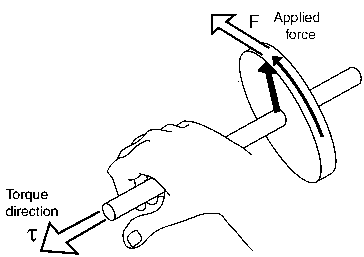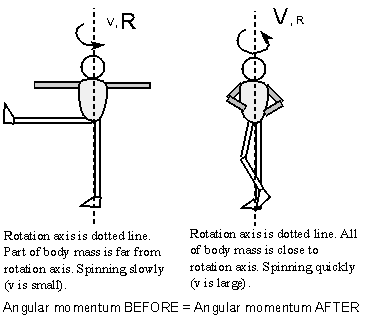Centripetal Motion
The word 'centripetal' in Latin means ‘center-seeking’. Therefore, we can describe centripetal motion as motion in a circular path.
Centripetal force, then, describes the rotational motion of an object. It is the net force, which causes the centripetal acceleration to move an object in circular motion. The equation for centripetal force is derived through Newton's second law of motion.
Angular velocity is the velocity in which the object is moving. This quantity is a vector, depicted using the omega sign ω
Centripetal acceleration is the rate of change of centripetal velocity. Centripetal acceleration is also a vector quantity which requires a magnitude and a direction.
Both angular acceleration and centripetal force point towards the direction of the axis.
Centripetal Force
Torque
Torque is the tendency for a force to rotate an object about an axis. Torque is also a vector value; it has both a direction and a magntidue.
We can see which direction torque is moving by using the right hand rule:
The fingers curls in the direction of the applied force, while the thumb points in the direction of torque.
The magnitdue of torque can be found using the equation:
τ = rFsin(θ)
τ represents the torque
r represents the length from the place the
torque is being measured to the applied force
F represents the applied force
θ represents the angle between the applied force and the lever arm

Equation derivation of centripetal force
source: Eve Tsou
Angular Momentum
The angular momentum is described as the amount of rotation an object has with respects to its mass, speed and shape.
This vector quantity is conserved in classical mechanics when there is no net external torque placed onto an object. This means that the initial measured angular momentum must be equal to the final measured angular momentum.
Angular momentum can be represented with the formula:
L = Iω
L represents the angular momentum measured in either newton meter seconds
(N·m·s or kg·m /s) or Joules seconds (J·s)
I represents the moment of inertia
ω represents the angular velocity
2

Moment of Inertia
Moment of inertia looks at the inclination for an object to travel in a straight line at a constant velocity. This means that the object that is moving will want to continue in their direction of motion; they do not want to change directions or speed.
Moment of inertia is directly proportional to the angular momentum. Moment of inertia varies depending on what type of 3D object you are looking at and from what point you are measuring it.
Rotational inertia is due to the fact that rigid bodies are able to remain in its solid state when in rotational motion.

